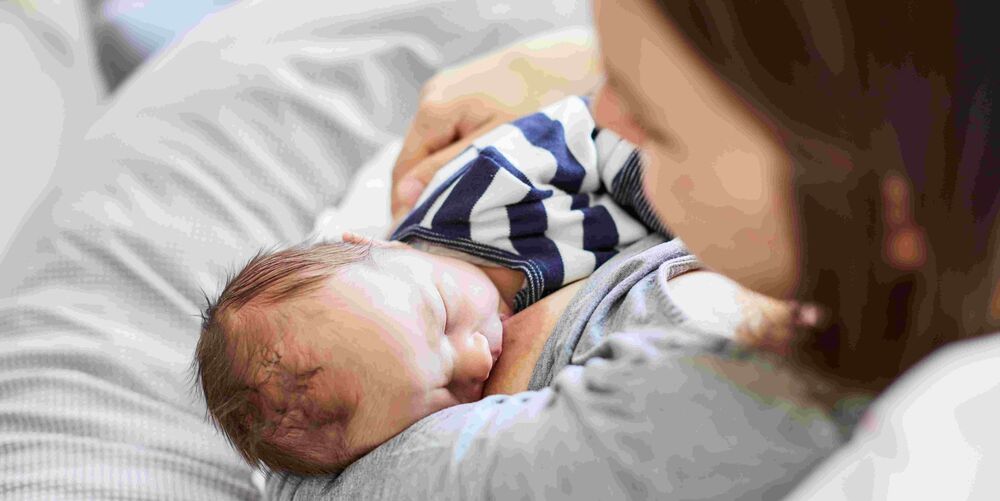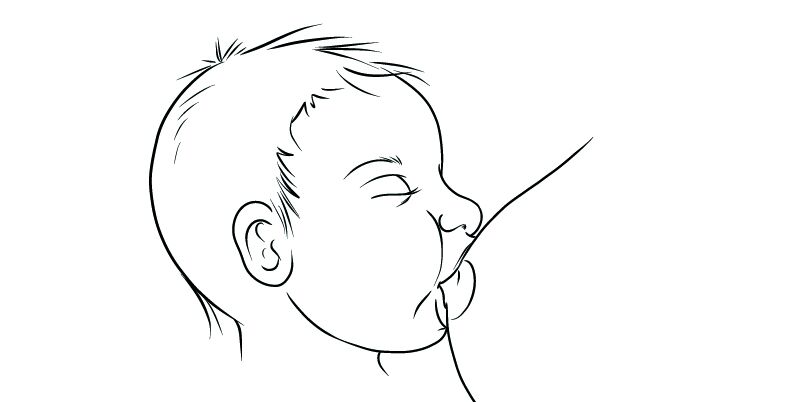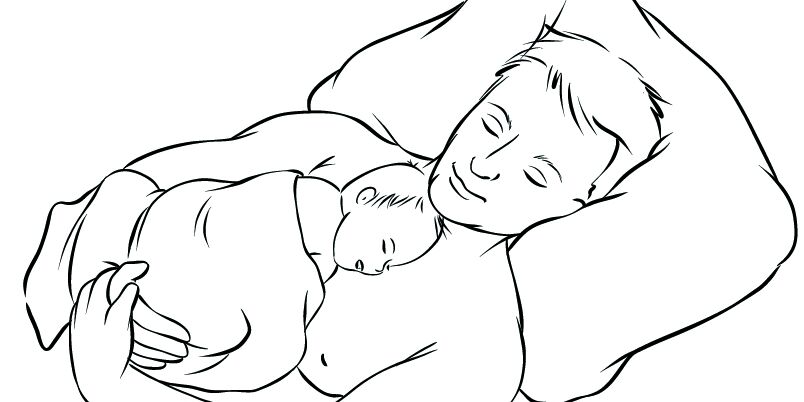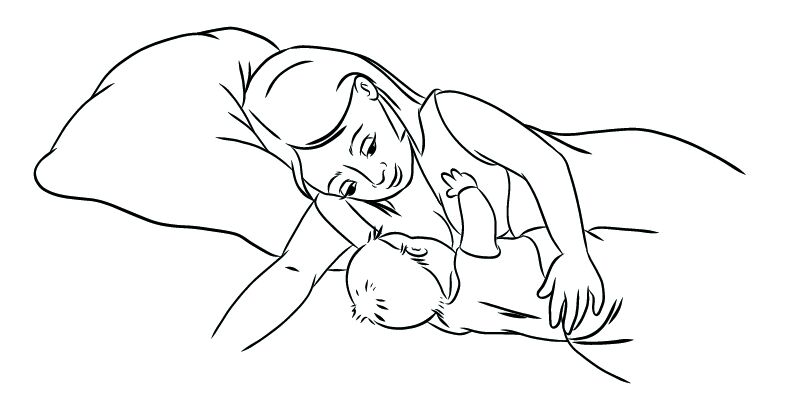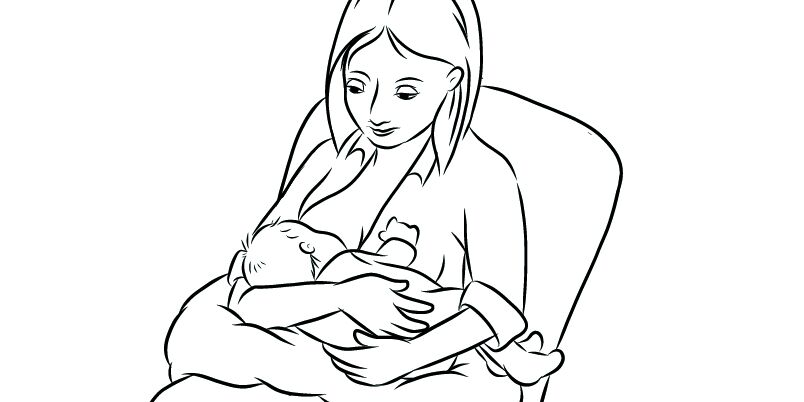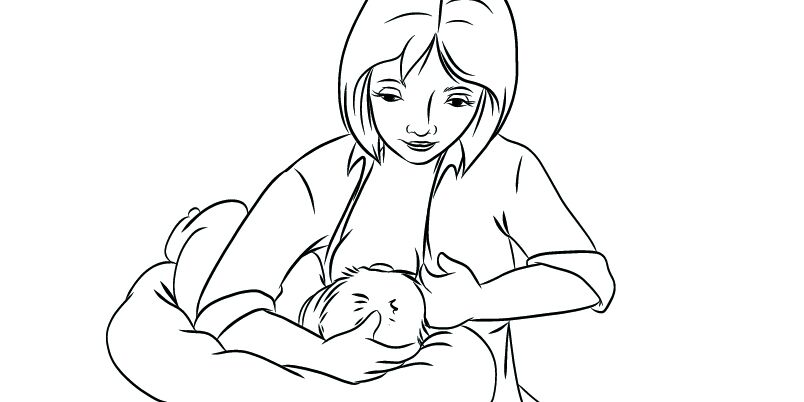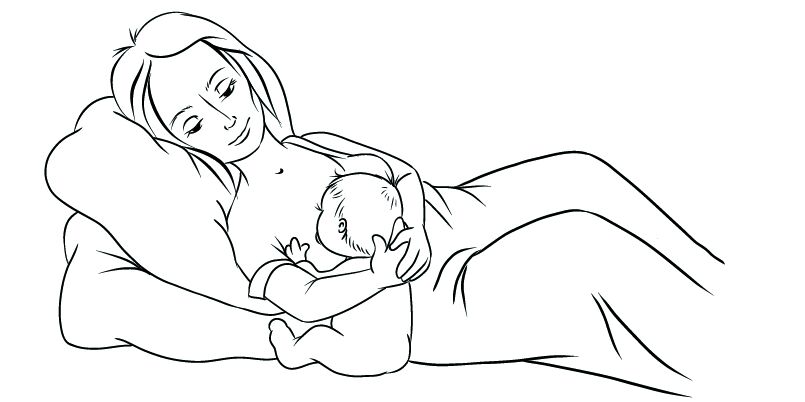Bring your child's head to your breast and not your breast to the child. Stimulate the child's mouth and cheeks so it will open up its mouth wide enough to get your whole nipple and areola in its mouth. Give your baby enough time to react to the stimulation. While suckling the child's lips - especially the bottom one - need to be curved outwards.
If you feel you need to hold your breast for your child, we recommend the so-called "c-grasp": Your fingers lie flat below the areola and beneath your breast. Your thumb is gently placed above your nipple without squeezing it.
While suckling, the movements of your baby's tongue and jaw are comparable to the milking procedure. The milk gets emptied out of the mammary ducts. If your child's checks look like it is sucking on a straw, you need to restart the process (help your child if you like).
You can feel when the milk-flow starts. Some women describe a sense of tingling or twinging.
It is normal for your baby to take a few breaks during feeding. If your baby falls asleep to quickly, you can help it start suckling again by tenderly stroking its hands.
Let your child drink for as long as it likes. You can feel whether it is drinking properly or only suckling. Though suckling is perfectly normal at the end of nursing.
